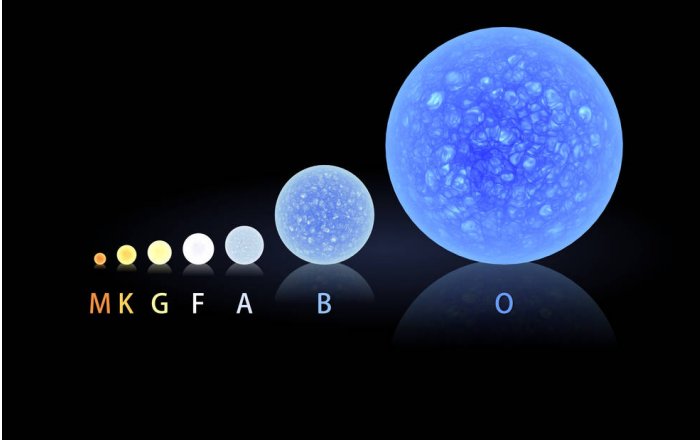Eddie Gonzales Jr. – MessageToEagle.com – A NASA-sounding rocket will observe a nearby star to learn how starlight affects the atmospheres of exoplanets – key information in the hunt for life outside our solar system.
Using an updated instrument first launched in 2019, the mission has a new target: Procyon A, the brightest star in the constellation Canis Minor.
A size comparison of main sequence Morgan–Keenan classifications. Main sequence stars are those that fuse hydrogen into helium in their cores. The Morgan–Keenan system shown here classifies stars based on their spectral characteristics. Our Sun is a G-type star. SISTINE-2’s target is Procyon A, an F-type star. Credits: NASA’s Goddard Space Flight Center
But its question remains the same: How does a star’s light affect potential signs of life on planets that orbit it?
The Suborbital Imaging Spectrograph for Transition region Irradiance from Nearby Exoplanet host stars, or SISTINE-2, mission will have its first opportunity to launch from the White Sands Missile Range in New Mexico on Nov. 8.
Answering the question of whether life exists elsewhere in the universe is beset with technical challenges. We can’t yet travel to planets around other stars, called exoplanets, to see for ourselves. Nor are our telescopes powerful enough to see their surfaces.
Instead, astronomers look to an exoplanet’s atmosphere, scouring it for traces of chemicals associated with life. Water, methane, oxygen, ozone, and other so-called biomarkers produce unique patterns of light that telescopes can detect from afar. But to interpret them correctly, astronomers must look to the planet’s star.
“The interplay between the planet’s atmosphere and ultraviolet light from the host star determines which gases serve as the best biomarkers,” said Kevin France, an astrophysicist at the University of Colorado Boulder and the principal investigator for the mission.
Some ultraviolet (UV) wavelengths, for instance, can break down carbon dioxide, freeing a single oxygen atom to combine with others and form molecular oxygen (made of two oxygen atoms) or ozone (made of three). Stars that shed enough of this light can create spurious biomarkers on their planets, sending astronomers searching in the wrong places.
The SISTINE team aims to avoid this quandary by creating a guide to the wavelengths each kind of star emits. There are many different types of stars, and we don’t yet have a complete picture of their light output or how it varies over time. With a catalog of starlight, scientists could estimate if a detected biomarker is either a potential sign of life or a false signal cooked up by pesky starlight.
Written by Eddie Gonzales Jr. MessageToEagle.com Staff







